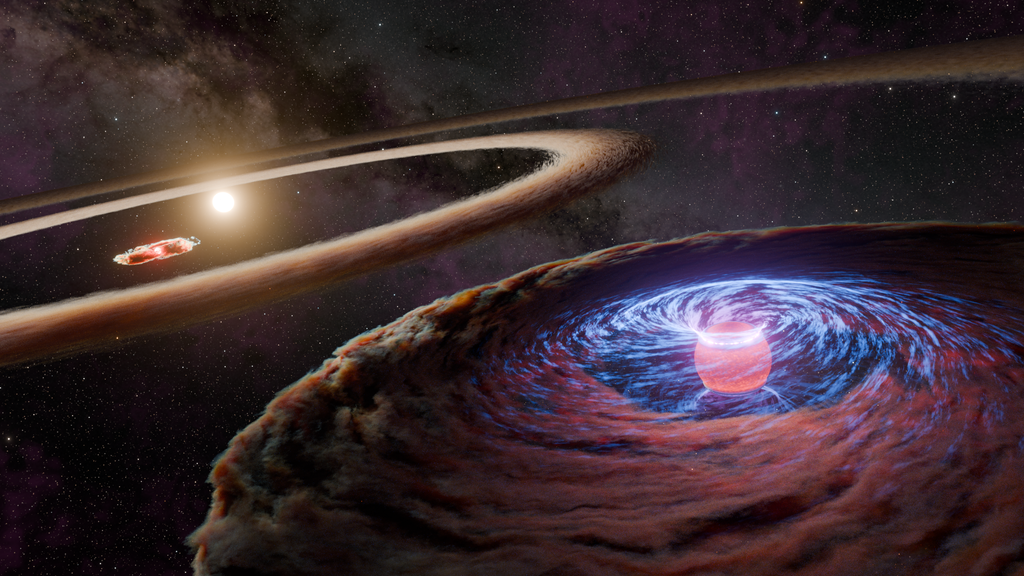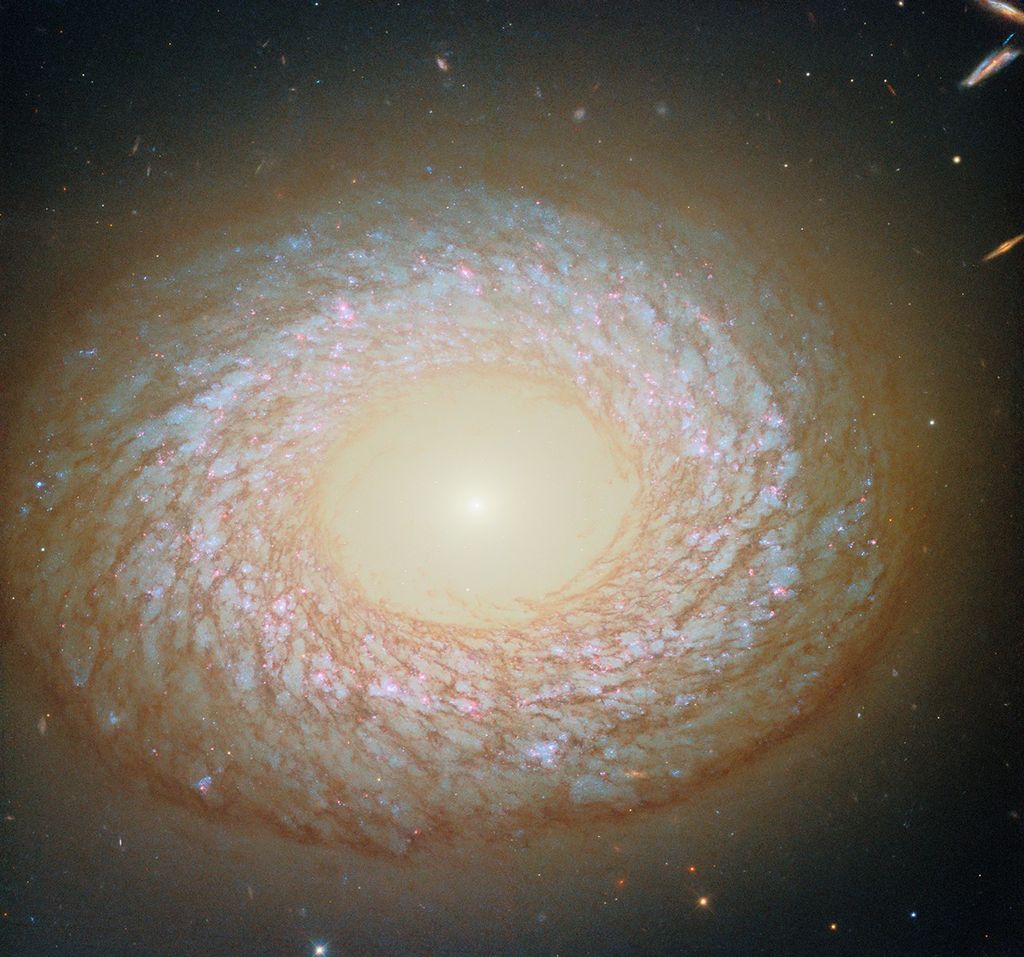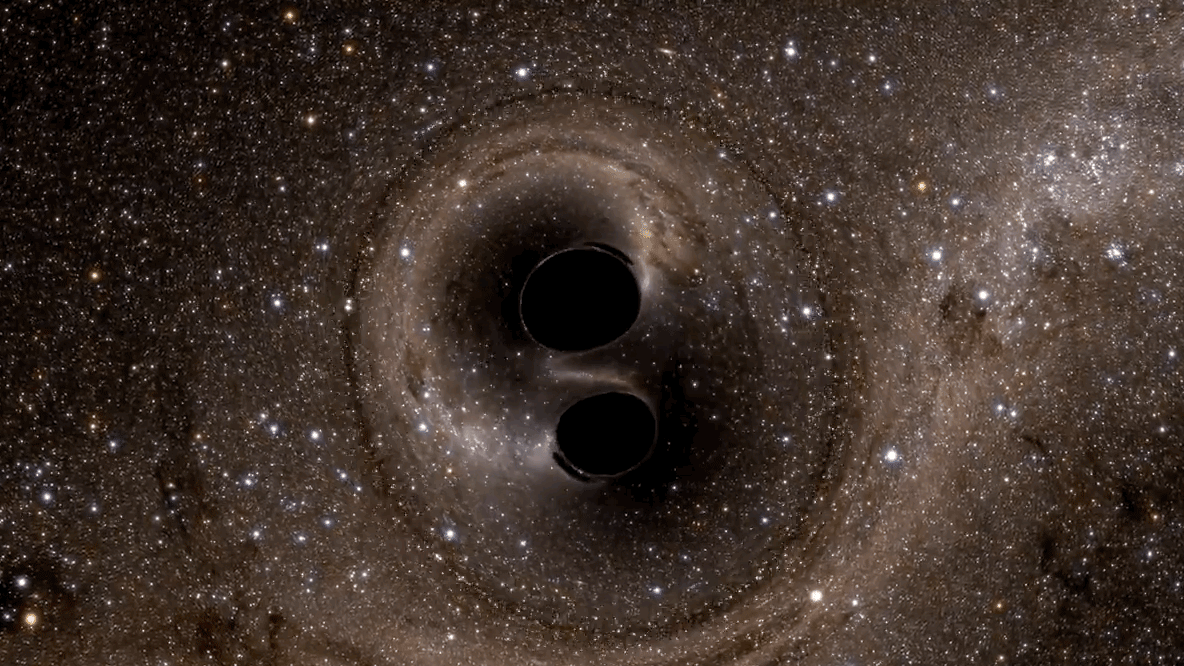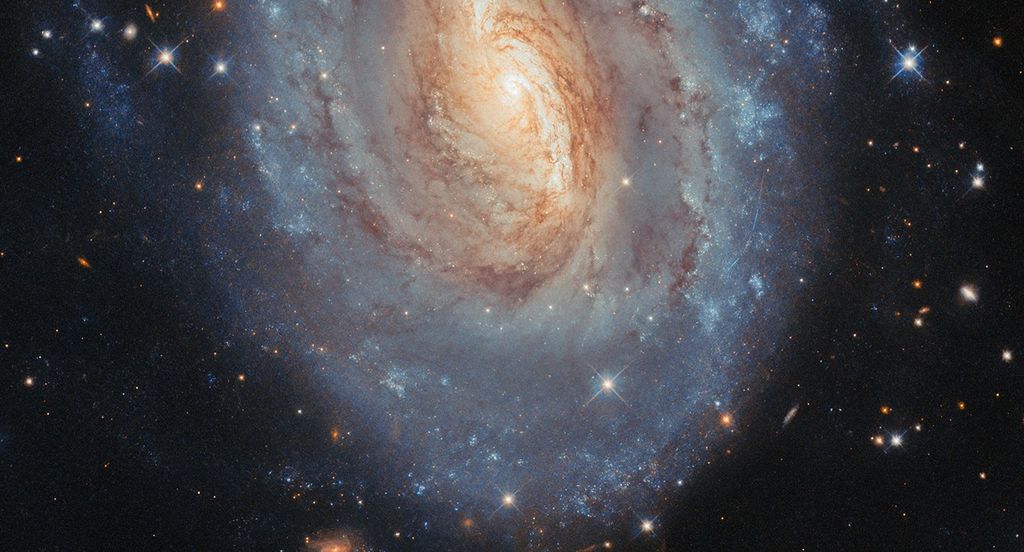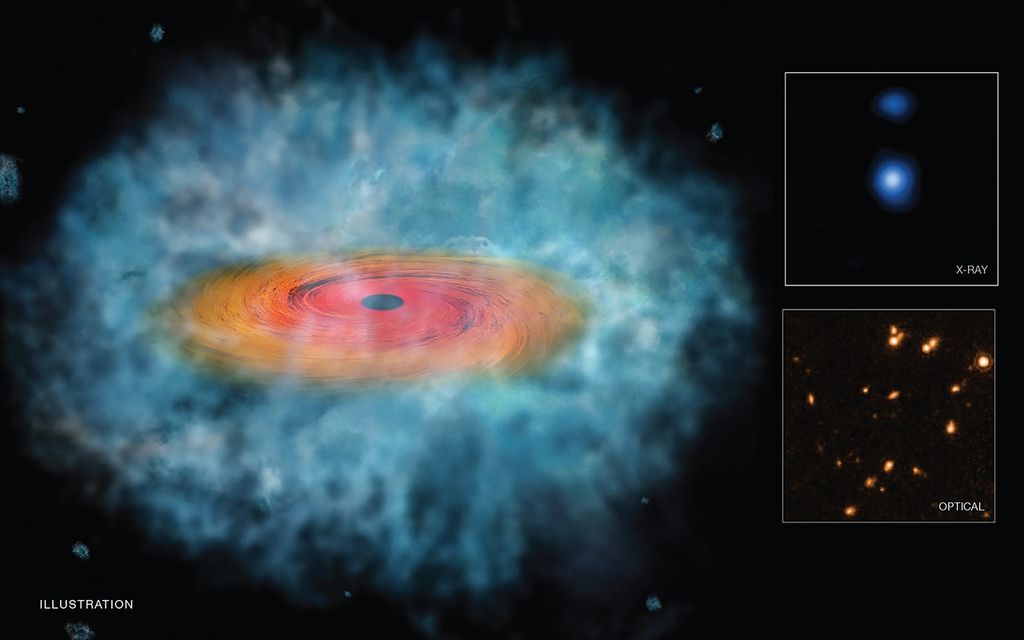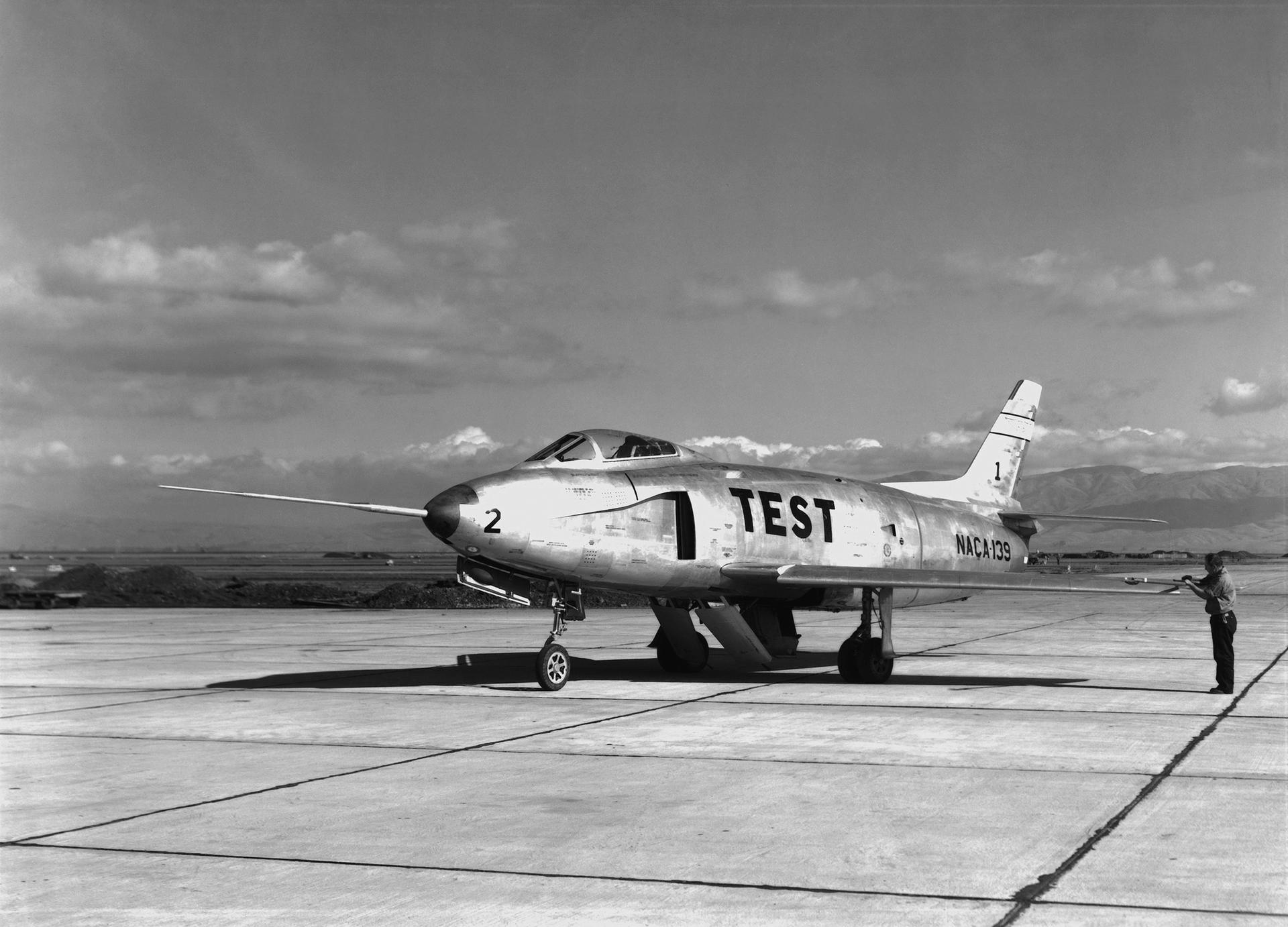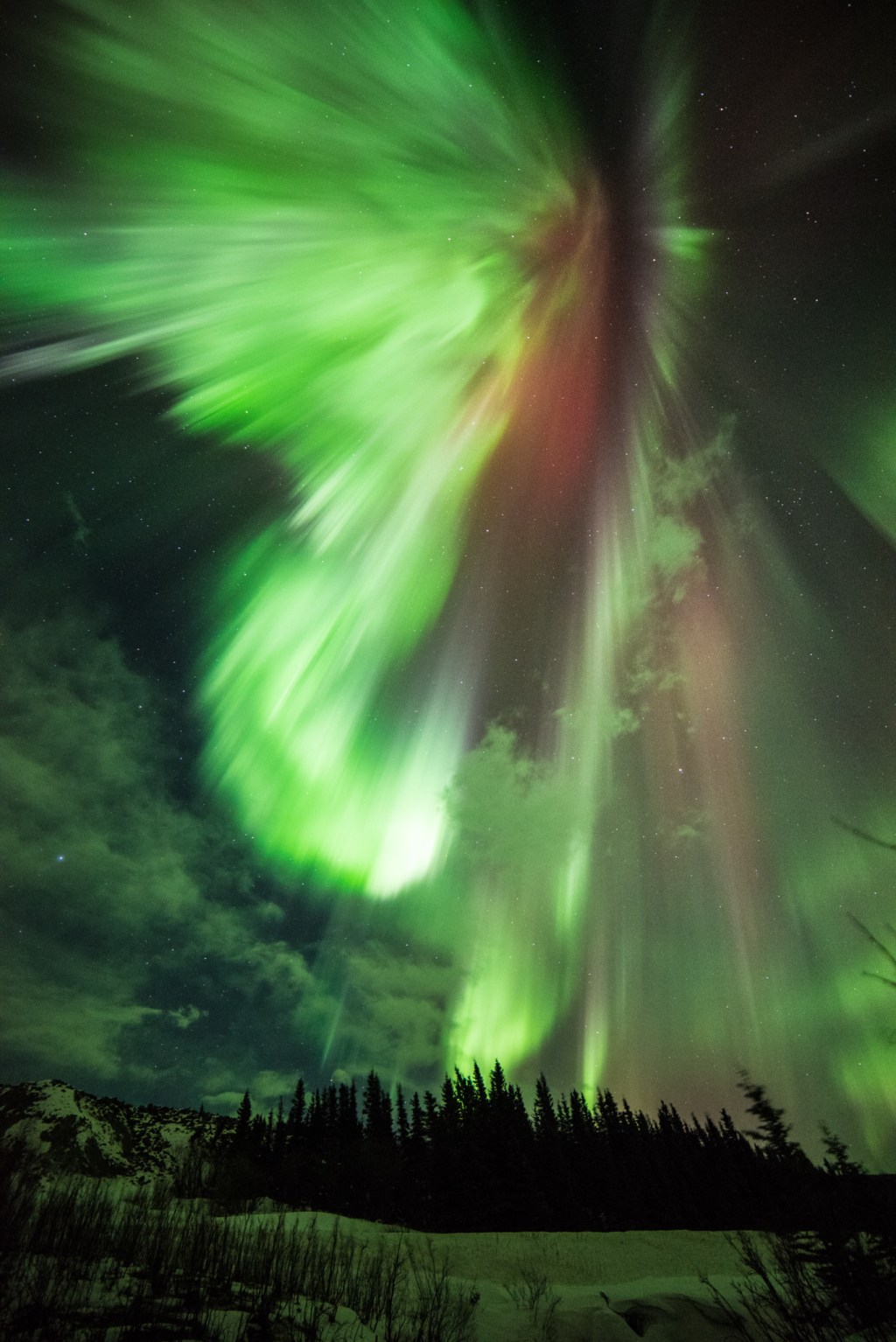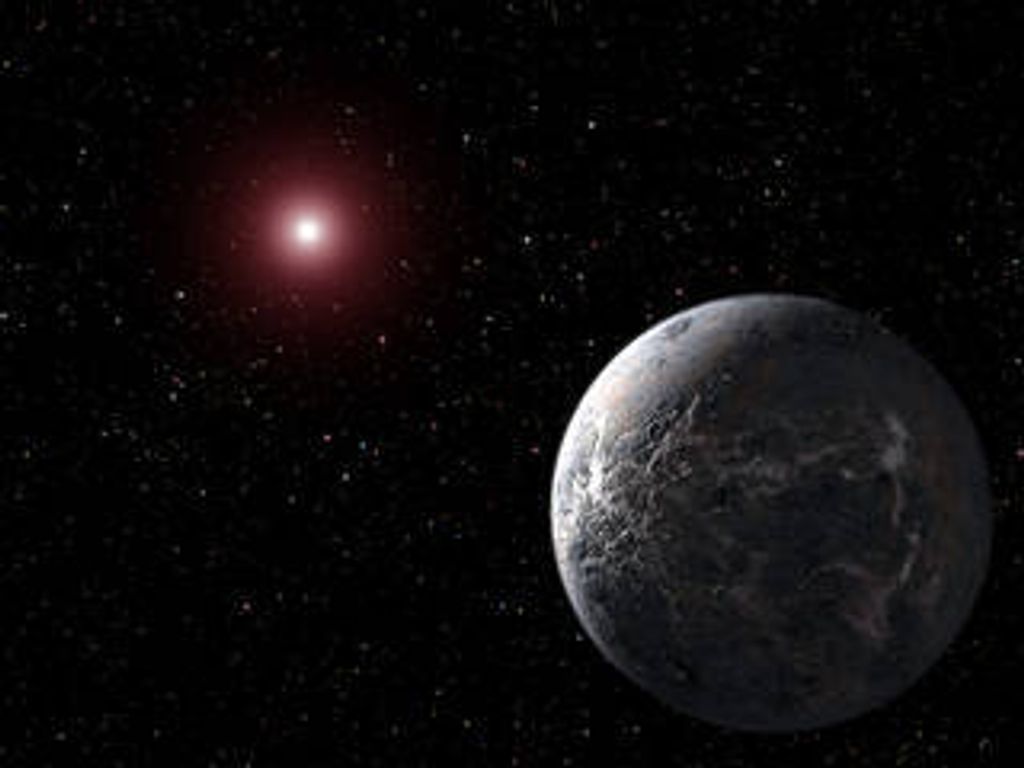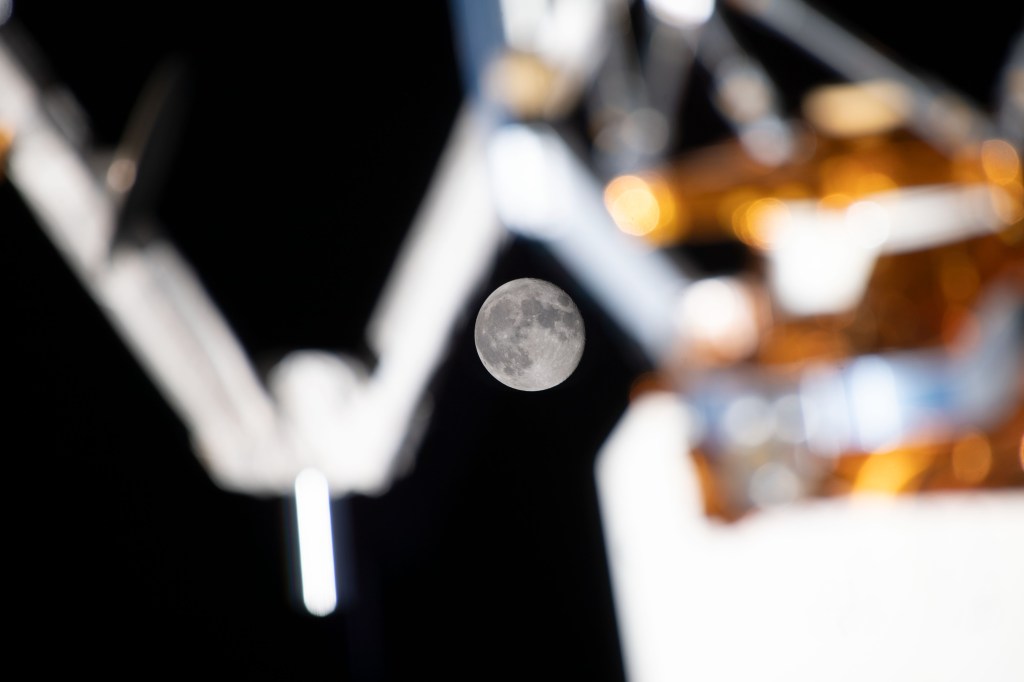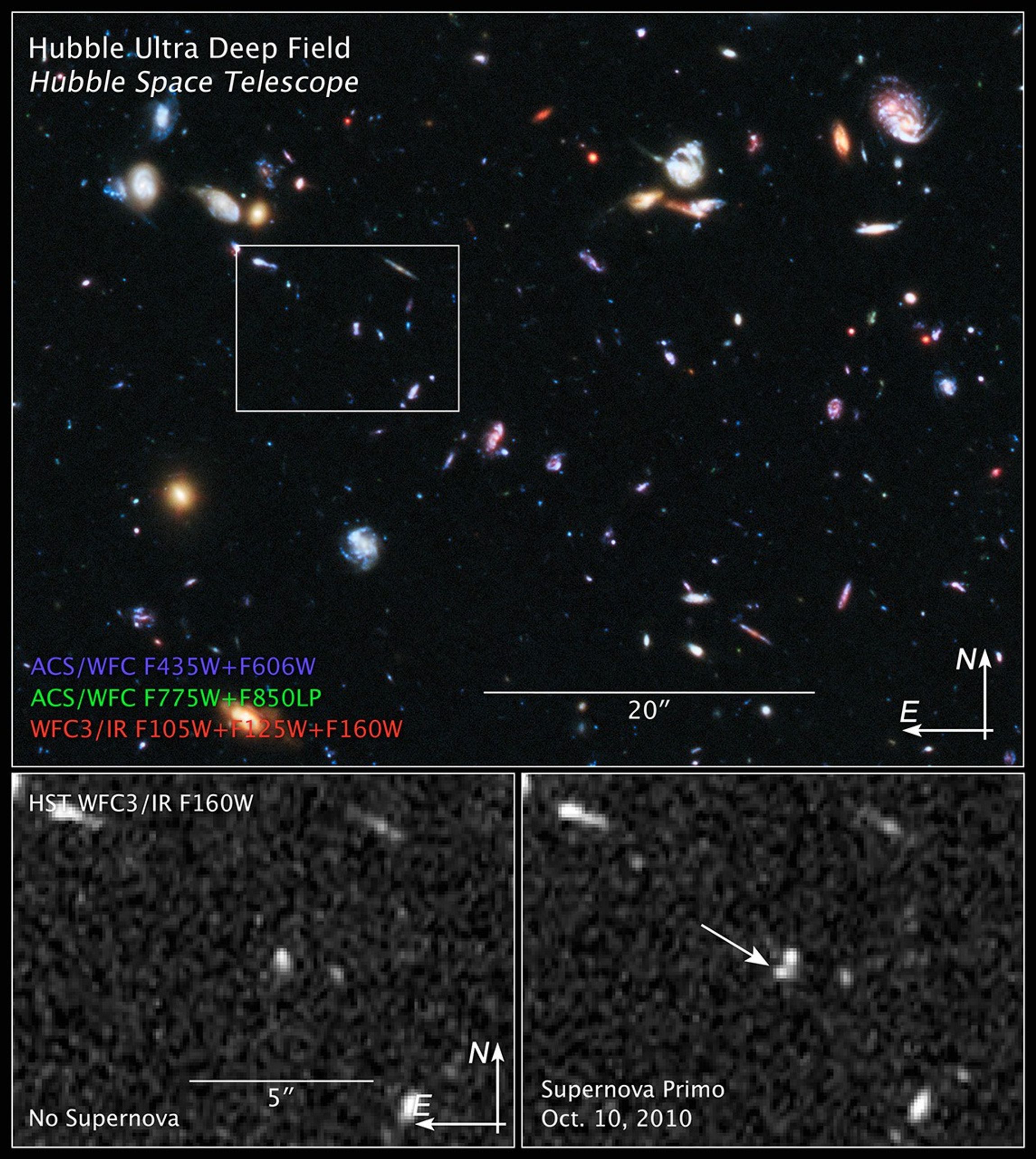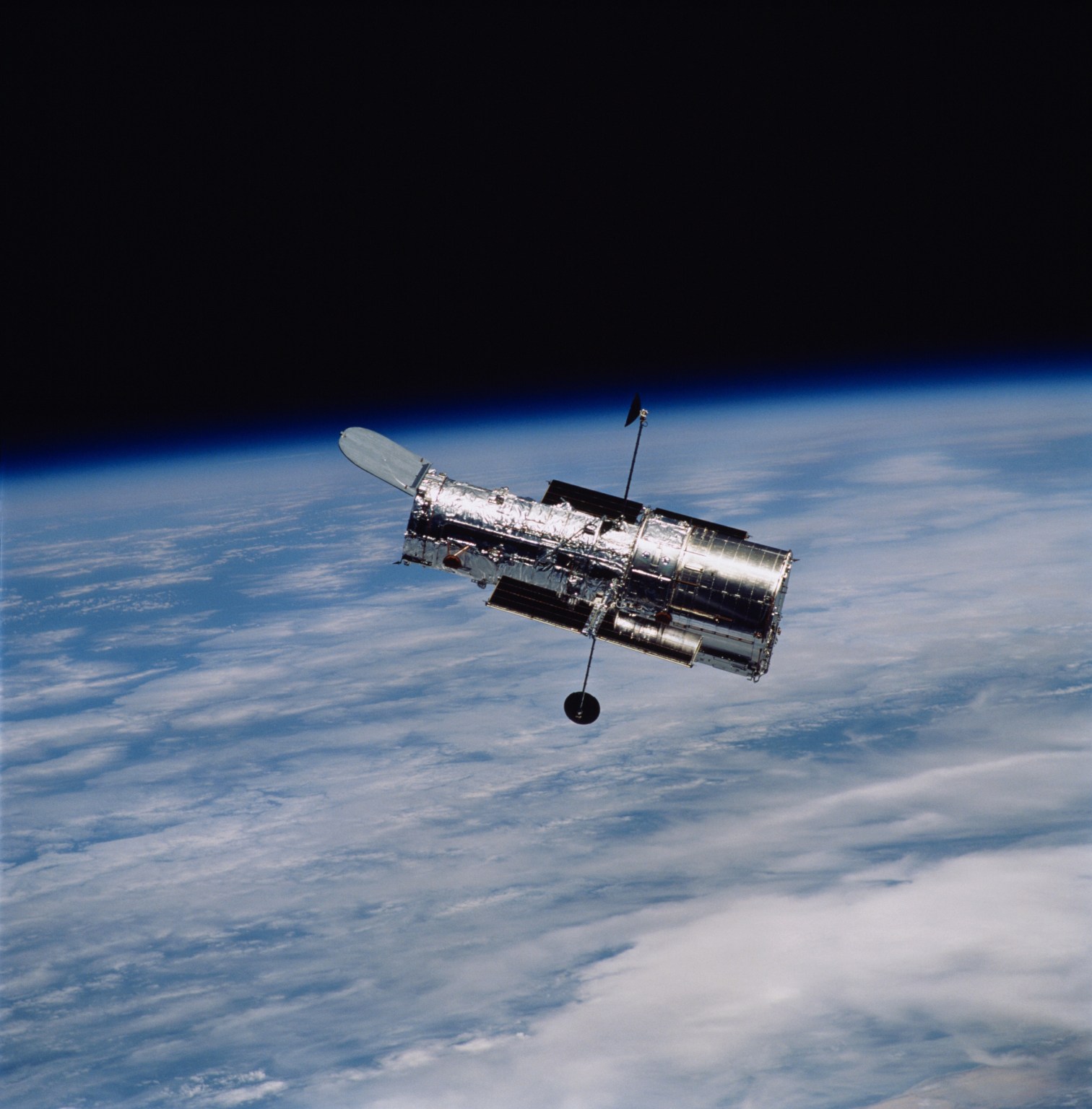1 min read
Hubble Snags One of the Farthest Exploding Stars
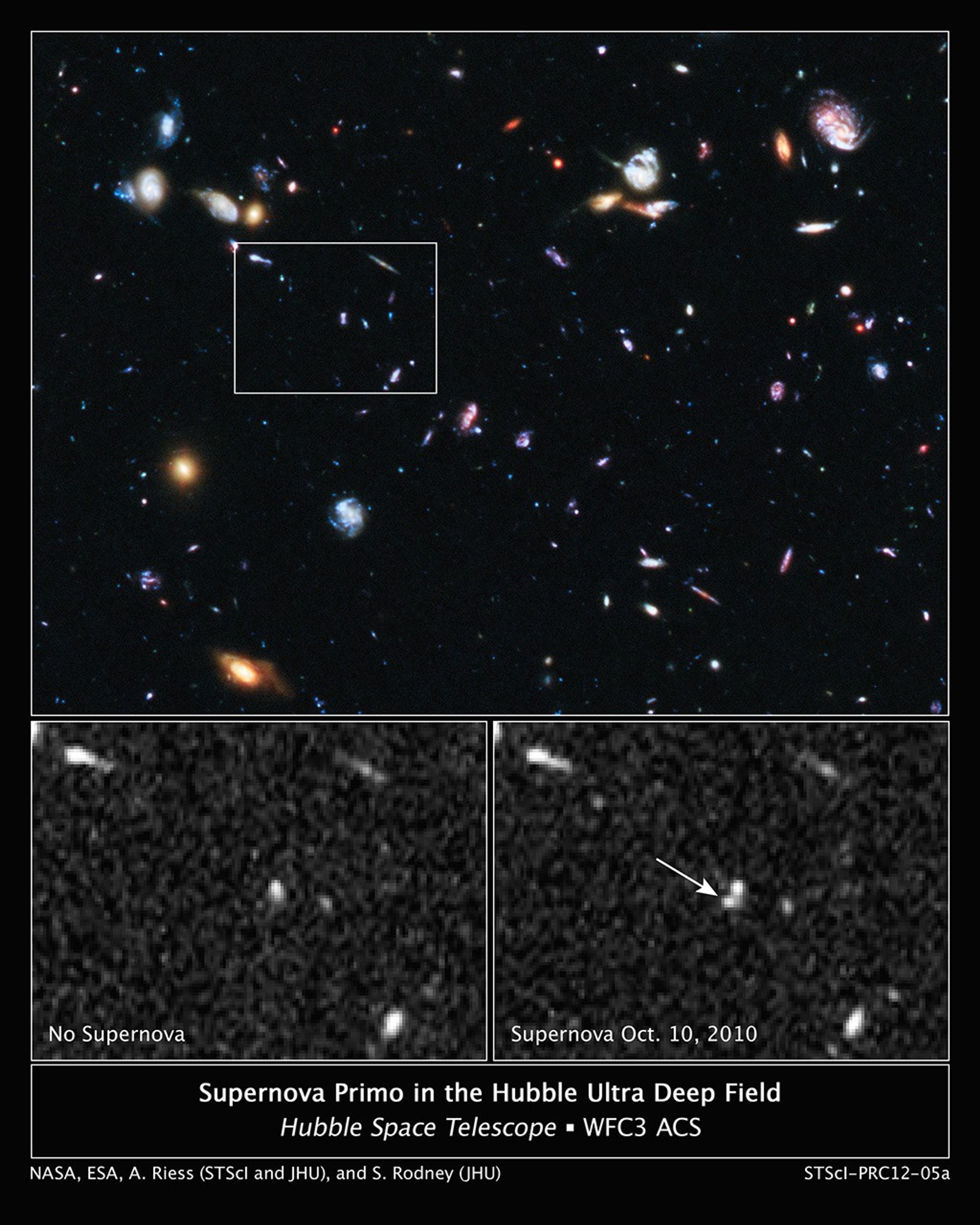
These three images taken by NASA's Hubble Space Telescope reveal the emergence of an exploding star, called a supernova.
Nicknamed SN Primo, the exploding star belongs to a special class called Type Ia supernovae, which are distance markers used for studying dark energy and the expansion rate of the universe. Type Ia supernovae most likely arise when white dwarf stars – the burned-out cores of normal stars – siphon too much material from their companion stars and explode.
The top image shows part of the Hubble Ultra Deep Field, the region where astronomers were looking for a supernova blast. The white box pinpoints the area where the supernova is later seen. The image combines observations taken in visible and near-infrared light with the Advanced Camera for Surveys and the Wide Field Camera 3.
The image at bottom left, taken by the Wide Field Camera 3, is a close-up of the field without the supernova.
A new bright object, identified as the supernova, appears in the Wide Field Camera 3 image at bottom right.
The exploding star was discovered as part of a search for distant Type Ia supernovae called the CANDELS+CLASH Supernova Project.
The supernova team's search technique involved taking multiple near-infrared images over several months, looking for a supernova's faint glow. Once the team spotted the stellar blast in October 2010, they used WFC3's spectrometer to verify SN Primo's distance and to decode its light, finding the unique signature of a Type Ia supernova. The team then re- imaged SN Primo periodically for several months, measuring the slow dimming of its light.
About the Object
- R.A. PositionR.A. PositionRight ascension – analogous to longitude – is one component of an object's position.03h 32m 38.01s
- Dec. PositionDec. PositionDeclination – analogous to latitude – is one component of an object's position.-27° 46' 39.08"
- ConstellationConstellationOne of 88 recognized regions of the celestial sphere in which the object appears.Fornax
- DistanceDistanceThe physical distance from Earth to the astronomical object. Distances within our solar system are usually measured in Astronomical Units (AU). Distances between stars are usually measured in light-years. Interstellar distances can also be measured in parsecs.Redshift: z=1.55
About the Data
- Data DescriptionData DescriptionProposal: A description of the observations, their scientific justification, and the links to the data available in the science archive.
Science Team: The astronomers who planned the observations and analyzed the data. "PI" refers to the Principal Investigator. - InstrumentInstrumentThe science instrument used to produce the data.HST>ACS/WFC and HST>WFC3/IR
- Exposure DatesExposure DatesThe date(s) that the telescope made its observations and the total exposure time.Data used in these images were taken in 2010 and 2011.
- FiltersFiltersThe camera filters that were used in the science observations.ACS/WFC: F435W (B), F606W (V), F775W (i), and F850LPW (z); WFC3/IR: F105W (Y), F125W (J), and F160W (H)
- Object NameObject NameA name or catalog number that astronomers use to identify an astronomical object.Hubble Ultra Deep Field, HUDF, and SN Primo
- Object DescriptionObject DescriptionThe type of astronomical object.Deep survey (color image) and Type Ia Supernova (greyscale images)
- Release DateJanuary 11, 2012
- Science ReleaseNASA’s Hubble Breaks New Ground with Distant Supernova Discovery
- CreditNASA, ESA, A. Riess (Space Telescope Science Institute and The Johns Hopkins University), and S. Rodney (The Johns Hopkins University)

This image is a composite of separate exposures acquired by the WFC3 and ACS instruments on HST. Several filters were used to sample broad wavelength ranges. The color results from assigning different hues (colors) to each monochromatic (grayscale) image associated with an individual filter. In this case, the assigned colors are: Blue: F435W (B) + F606W (V) Green: F775W (i) + F850LPW (z) Red: F105W (Y) + F125W (J) + F160W (H)

Related Images & Videos

Hubble Ultra Deep Field Continues to Tell the Unfolding Story of the Universe
Beginning in 2004, the Hubble Space Telescope has observed a spot in the sky known as the Hubble Ultra Deep Field (HUDF) many times. The extremely deep and detailed cumulative exposure reveals some of the faintest objects ever detected, some of which turn out also to be among...
Share
Details
Claire Andreoli
NASA’s Goddard Space Flight Center
Greenbelt, Maryland
claire.andreoli@nasa.gov

